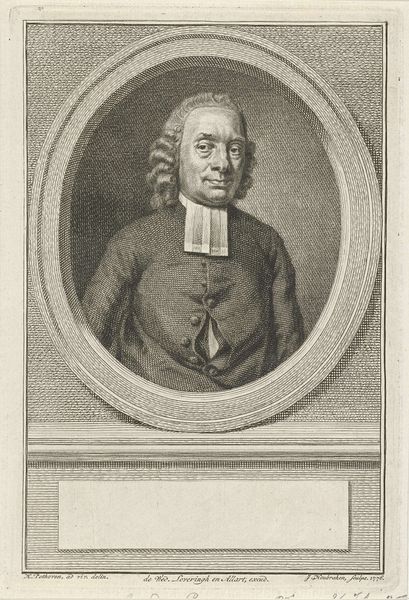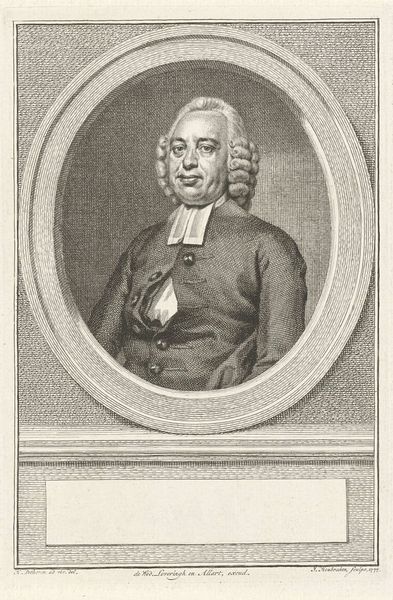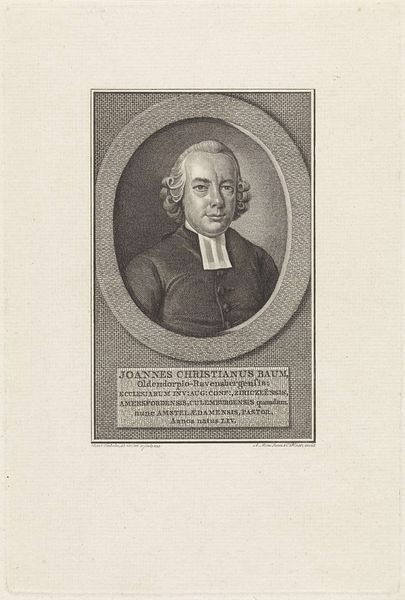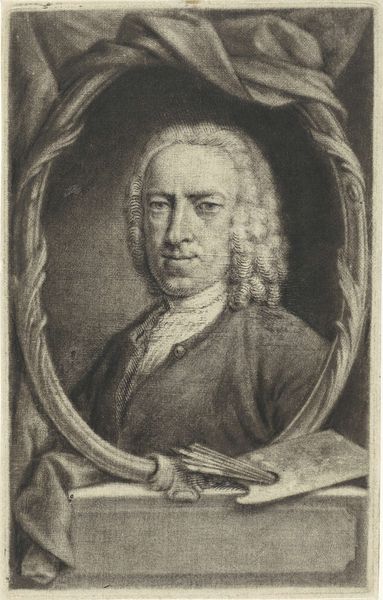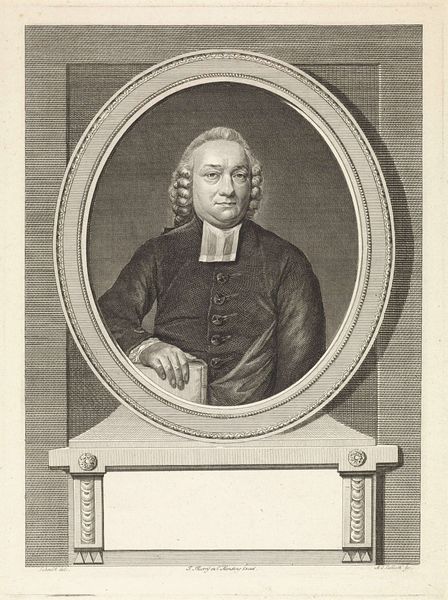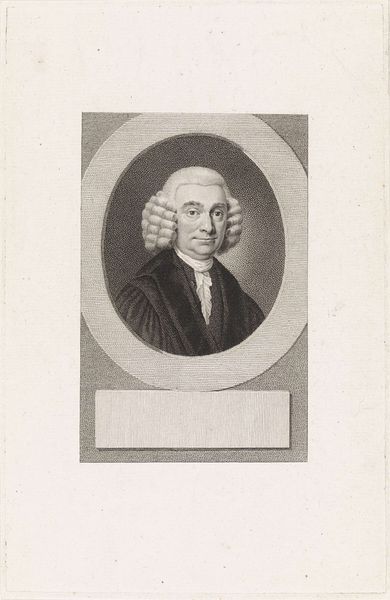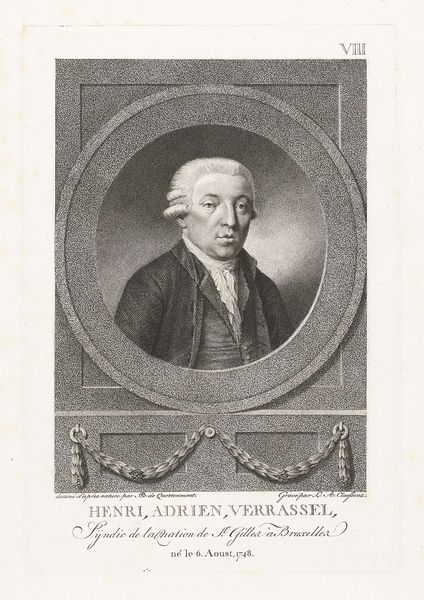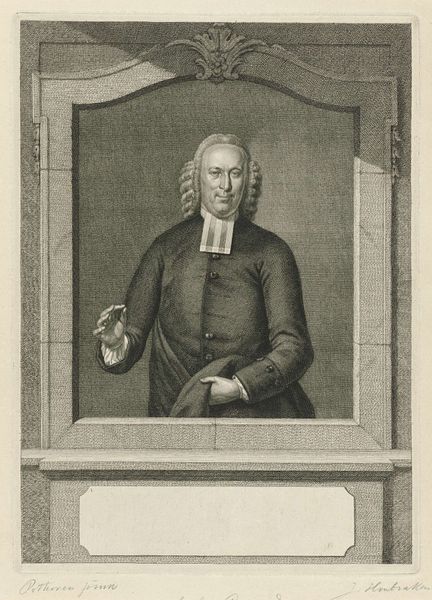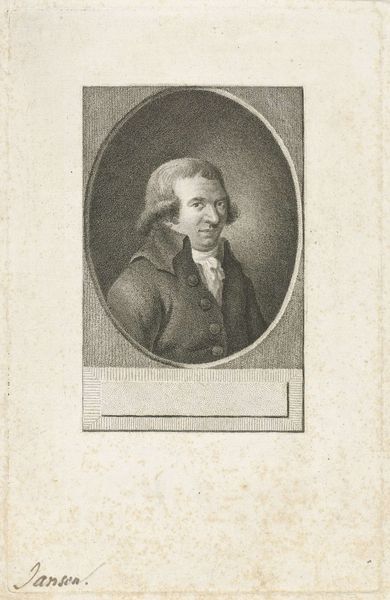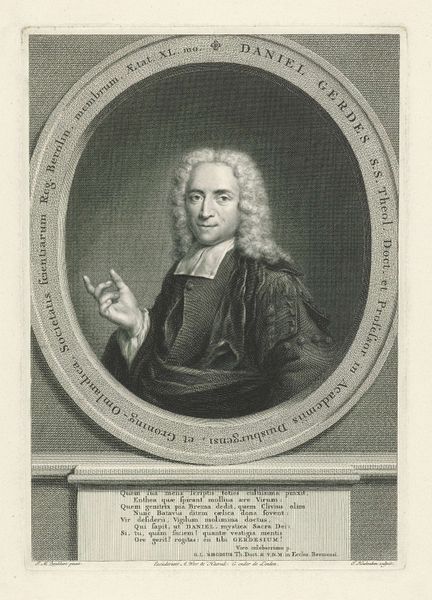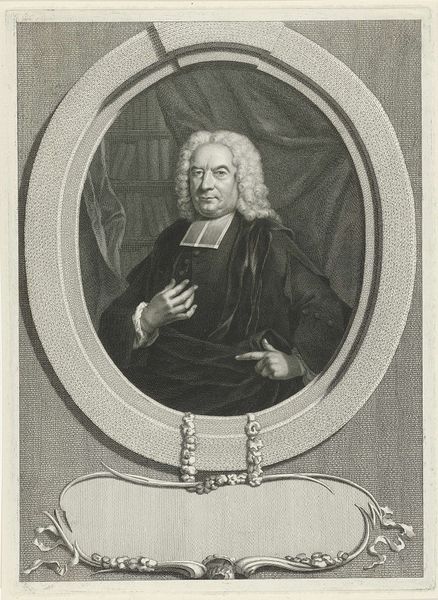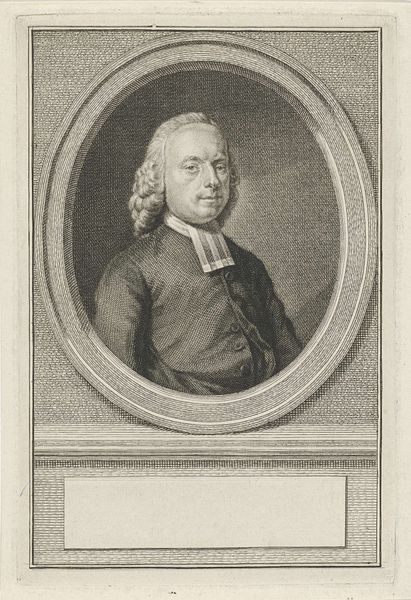
Dimensions: height 185 mm, width 131 mm
Copyright: Rijks Museum: Open Domain
Curator: Before us is "Portret van Johannes Boskoop," a work dating from 1769 to 1771 by Jacob Houbraken, currently held at the Rijksmuseum. It's an engraving. Editor: My first impression is one of thoughtful consideration, though perhaps a bit formal. The sitter is framed within an oval, an older man gazing outward. The engraver really captured a moment of contemplative, serene stillness. Curator: The visual language of the baroque portrait often reinforced power, but engravings also had another important purpose—to make images and knowledge accessible to the wider population. It would have allowed wider access to portraits of intellectuals or political figures. Considering the date, let’s consider how this portrait also signals Boskoop's role in Enlightenment thought and what that may mean in society and politics. Editor: Yes, the man is depicted in civic dress, suggesting his professional standing, but then we should consider his expression. His hand gesture and the overall posture indicate learning, intelligence, an almost pedagogical openness. He's presenting himself as a figure of wisdom. Curator: Absolutely, there’s a certain democratizing element at play. Through his portrayal in print, a broader public now had the possibility of identifying with these Enlightenment ideals. What could have been strictly reserved for the higher classes suddenly has the potential to engage many more individuals. It subtly shifts notions of leadership and intellectual authority to someone of that class. Editor: Looking closely at his eyes, I can't shake the feeling that he's inviting the viewer into a quiet discussion. Jacob Houbraken may be capturing an openness here. By removing much of the typical elitist codes, he makes Boskoop’s character readable for most people. Curator: Exactly. It offers up discussions about the very structures upholding certain privileges, giving it importance for those viewing the piece in that era, as well as us in a contemporary view. It truly asks who gets to be represented, who is deemed worthy of that representation, and what narratives do they offer in turn? Editor: That is right, seeing as it can provide us today with so much, perhaps his own society greatly gained as well from viewing and studying the portrait. Curator: Thank you; your observations have made clear what meanings may be taken when considering an engraving from this point of social and political history. Editor: My pleasure, I greatly enjoyed the discussion and feel I have learned a lot more about engravings thanks to you!
Comments
No comments
Be the first to comment and join the conversation on the ultimate creative platform.
